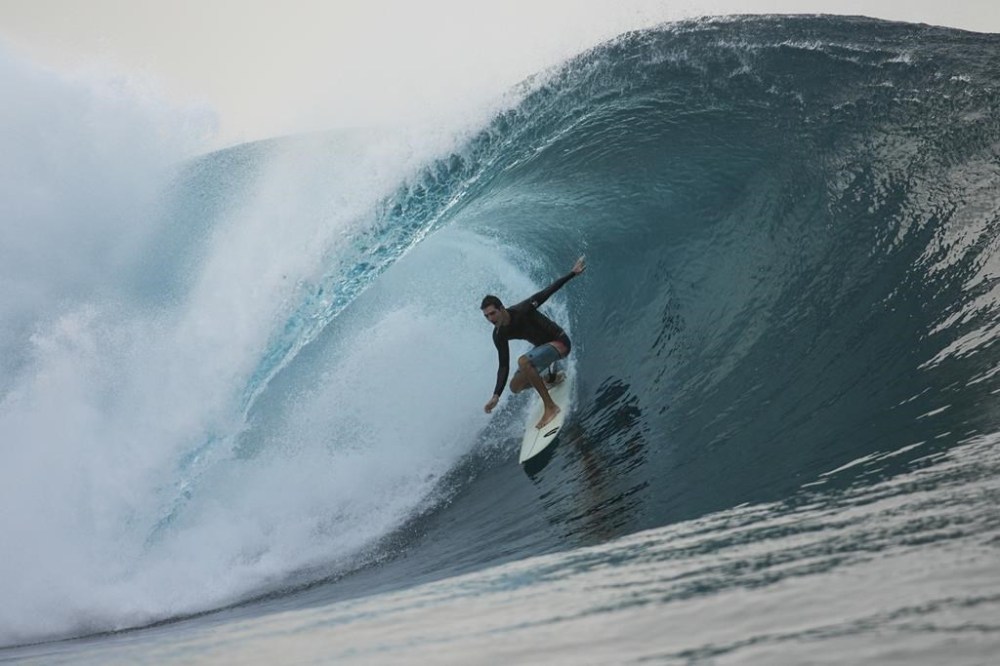The wave ‘at the end of the road’: A look at the unique features of the Olympic Games surf spot
Advertisement
Read this article for free:
or
Already have an account? Log in here »
To continue reading, please subscribe:
Monthly Digital Subscription
$1 per week for 24 weeks*
- Enjoy unlimited reading on winnipegfreepress.com
- Read the E-Edition, our digital replica newspaper
- Access News Break, our award-winning app
- Play interactive puzzles
*Billed as $4.00 plus GST every four weeks. After 24 weeks, price increases to the regular rate of $19.00 plus GST every four weeks. Offer available to new and qualified returning subscribers only. Cancel any time.
Monthly Digital Subscription
$4.75/week*
- Enjoy unlimited reading on winnipegfreepress.com
- Read the E-Edition, our digital replica newspaper
- Access News Break, our award-winning app
- Play interactive puzzles
*Billed as $19 plus GST every four weeks. Cancel any time.
To continue reading, please subscribe:
Add Winnipeg Free Press access to your Brandon Sun subscription for only
$1 for the first 4 weeks*
*$1 will be added to your next bill. After your 4 weeks access is complete your rate will increase by $0.00 a X percent off the regular rate.
Read unlimited articles for free today:
or
Already have an account? Log in here »
Hey there, time traveller!
This article was published 16/07/2024 (443 days ago), so information in it may no longer be current.
This month some of the world’s best surfers will travel to Tahiti, French Polynesia, to compete for Olympic gold on what is known as one of the heaviest waves in the world. Called Teahupo’o, the wave has unique properties that make it difficult to ride, having claimed the life of at least one surfer. Here’s a look at the dynamics of the wave and the 2024 Paris Olympics’ surfing competition.
The legendary wave ‘at the end of the road’
Located on the lush mountainous southwestern coast of Tahiti, Teahupo’o is often referred to as “the end of the road” in the surfing community. The nickname is both literal and figurative: The wave is located where roads end on the island, but it is also considered a crown jewel in surfing destinations due to its remote location, unique properties and thrilling rides.

Dynamics of the wave
How the wave forms is considered a natural marvel: The pitch and shape of the barrels of water come from Southern Ocean swells that bend and race along a large, shallow reef. The wave leaves from a sloped bottom, hurling toward the reef and breaking below sea level.
The left-handed waves are usually between 6 to 10 feet high but at times have exceeded 20 feet. The ride is short — lasting between 200 to 300 feet — but extremely fast and intense.
Because of this combination of factors, it’s considered a difficult wave to ride and has claimed the life of at least one surfer. In fact, the name of the wave loosely translates into English as “pile of skulls,” reminding even the world’s most seasoned surfers to proceed with caution.
How scoring works in Olympic surfing
During surfers’ heats, a judging panel scores each wave ride on a scale of 1 to 10 based on a combination of factors, including speed, maneuvers and degree of difficulty. For each ride, the highest and lowest scores are discarded, with the surfer given the average of the three scores remaining.

Surfers are allowed to catch as many waves as they want in a heat, but wave selection can be crucial, especially given the unpredictable nature of the ocean.
___
AP Summer Olympics: https://apnews.com/hub/2024-paris-olympic-games











